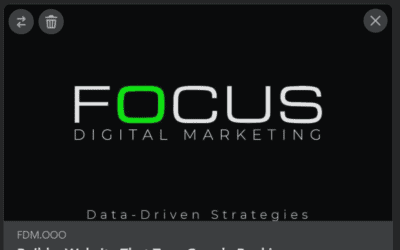I’m sitting here, relaxing on this beautiful Sunday afternoon, watching Homeland to see how they somehow keep stretching the story out and to make new seasons, all while scrolling through Instagram. While scrolling I stumble upon an ad that boldly declares, “SEO IS DEAD.” It stops me in my tracks because it takes me back about 12 years when I used to say the same thing, although for a different reason than you may think.
When I started building websites for clients back in 2002, it was the wild west of the Internet. There were no rules, no one really knew what they were doing. We were pioneers, making things up as we went along. For example, in 2004, a group of us in the industry created what we now know as responsive design. I can’t take credit for inventing it; that honor goes to some guys in London that introduced me to the concept via a podcast. But I embraced the concept and helped shape it into what it is today. Back then, it was quite a big deal, we even were awarded Top Web Designer in the US in 2006 and 2007 for my contributions. But I digress. The point is, there were no rules back then, especially when it came to ranking on search engines.
We resorted to all sorts of tactics to boost rankings. We would stuff keywords into the source code, make text blend into the background color, and create barely readable copy just to cram in as many keywords as possible. We even chased after thousands of backlinks from sketchy sources to increase domain authority. We did whatever it took. But then Google stepped in and started caring about the user experience. They fought back, constantly closing the loopholes and fixing the glitches we exploited. By around 2010, it seemed like there was no shortcut to success anymore.
I even made a move and stopped offering SEO services to clients because I couldn’t deliver the desired results. In fact, I distinctly remember advising against monthly SEO services, claiming they no longer worked. So I began to focus on building really great websites with good content that users wanted to see, at that point, I was building the website for the user, I wasn’t trying to exploit some glitch or loophole, it was strictly about the user. That’s when I had my eureka moment. I realized that if I created engaging content that actually served the users, it naturally ranked high. It’s strange how I didn’t see it sooner. I was so fixated on shortcuts that I missed the real angle—doing things exceptionally well. The key was to create the best content, make the website lightning-fast, and ensure my servers were the pinnacle of technology available today.
Fast forward to today, and that’s exactly what we do as a full-service marketing agency, with a primary focus on local SEO.
So, yes, the SEO of 2002 is long gone. But the SEO we’ve learned from Google’s evolution, even though we fought it kicking and screaming the entire way, is still very much in play. It’s just not a quick fix. It’s a slow and steady journey to the top.
Watched a Tech Tutorial on YouTube? You Might Be Under Surveillance! Not ClickBait!
Beware: Your YouTube Tech Interests Could Lead to Federal Scrutiny The recent subpoena of Google to unveil details of thousands of YouTube viewers watching technology-related content has sparked a privacy uproar. What seemed like innocent tutorials on drone mapping...
Maximizing Social Shares: Mastering Website OpenGraph Settings
What Are Website OpenGraph Settings? OpenGraph settings, a preview for social media interaction, comprise HTML tags that turn a simple URL share into an improved media experience. When you share a webpage on social platforms like Facebook, these tags dictate how the...







